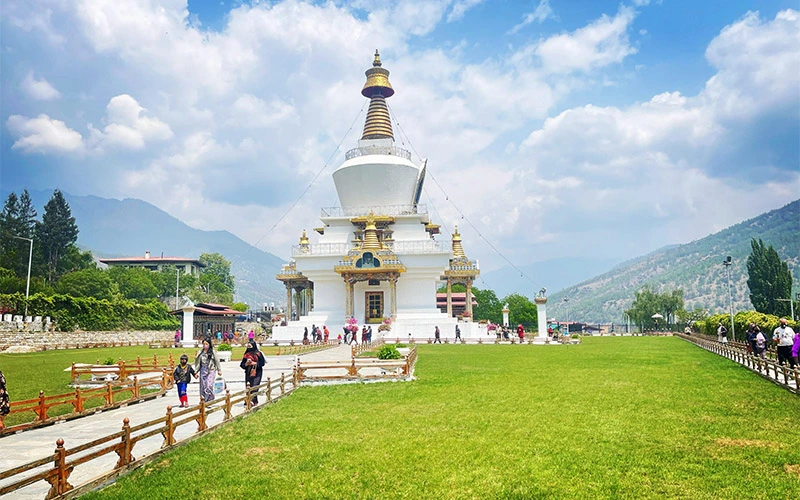Bhutan, known as the “Land of the Thunder Dragon,” is a destination where each season offers unique experiences. While it is open year-round for travel, the best times to visit are during spring (March to May) and fall (September to November). Here’s a breakdown of what each season offers:

-
Spring (March to May)
– Weather: Mild and dry, with temperatures between 3-25°C, making it ideal for outdoor activities.
– Highlights: This season is perfect for exploring the Himalayas, sightseeing, and trekking. The blooming Jacaranda flowers in Punakha Valley and events like the Paro Tshechu, Punakha Drubchen, and Ura Yakchoe offer insights into Bhutanese culture.
– Festivals:

– Paro Tshechu: A vibrant festival featuring dance and religious ceremonies.
– Ura Yakchoe: Known for traditional dances and relic displays in Ura Valley.
-
Fall (September to November)
– Weather: Crisp and clear, with temperatures from 10-23°C. The landscapes glow as rice paddies turn golden.
– Highlights: Excellent visibility and mild weather make this season ideal for exploring Bhutan’s scenic beauty and cultural landmarks.
– Festivals:
– Thimphu Tshechu: Held at Tashichho Dzong, this festival attracts locals and tourists alike.
– Black-Necked Crane Festival: Celebrated in Phobjikha Valley to mark the arrival of these endangered birds.
-
Summer (June to August)
– Weather: Temperatures are around 24-25°C with occasional rain showers, enhancing the lush green scenery.
– Highlights: Summer is perfect for witnessing the beautiful Himalayan landscapes, although it’s considered an off-season. The rains make the region even more vibrant, especially in the countryside.
– Festivals:

– Kurjey Tshechu: In Chokhor Valley, this festival honors Guru Rinpoche and features colorful rituals.
– Haa Summer Festival: Celebrates the rustic lifestyle and cultural heritage of the Haa Valley.
-
Winter (December to February)
– Weather: Chilly, with temperatures from -5 to 10°C. Snowfall occurs mainly in Thimphu and Paro by January.
– Highlights: Clear skies and quiet landscapes make winter ideal for sightseeing, especially for those looking to avoid crowds. Snow lovers can enjoy Bhutan’s winter landscapes.
– Festivals:
– Nomad Festival: Celebrates the traditional nomadic lifestyle in Bhutan’s northern regions.
– Punakha Dromche: A historical festival commemorating Bhutan’s unification.
Travel Tips:
– Spring and fall are peak seasons; book accommodations and guides in advance.
– Dress appropriately for the season, and carry essentials like sunscreen, raincoats (for summer), and warm clothing (for winter).
– Respect Bhutanese traditions, as they place high value on nature and cultural preservation.

